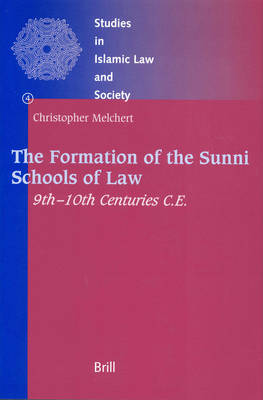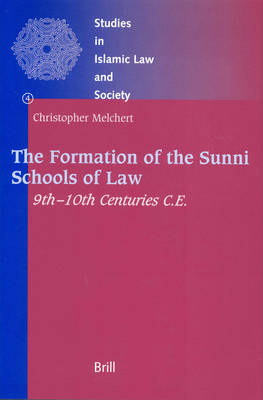
- Afhalen na 1 uur in een winkel met voorraad
- Gratis thuislevering in België vanaf € 30
- Ruim aanbod met 7 miljoen producten
- Afhalen na 1 uur in een winkel met voorraad
- Gratis thuislevering in België vanaf € 30
- Ruim aanbod met 7 miljoen producten
Zoeken
The Formation of the Sunni Schools of Law, 9th-10th Centuries C.E.
Christopher Melchert
€ 256,45
+ 512 punten
Omschrijving
The Sunni schools of law are named for jurisprudents of the eighth and ninth centuries, but they did not actually function so early. The main division at that time was rather between adherents of ra'y and ḥadīth. No school had a regular means of forming students.
Relying mainly on biographical dictionaries, this study traces the constitutive elements of the classical schools and finds that they first came together in the early tenth century, particularly with the work of Ibn Surayj (d. 306/918), al-Khallāl (d. 311/923), and a series of ḥanafī teachers ending with al-Karkhī (d. 340/952). Mālikism prospered in the West for political reasons, while the ẓāhirī and Jarīrī schools faded out due to their refusal to adopt the common new teaching methods.
In this book the author fleshes out these historical developments in a manner that will be extremely useful to the field, while at the same time developing some new and highly original perspectives.
Relying mainly on biographical dictionaries, this study traces the constitutive elements of the classical schools and finds that they first came together in the early tenth century, particularly with the work of Ibn Surayj (d. 306/918), al-Khallāl (d. 311/923), and a series of ḥanafī teachers ending with al-Karkhī (d. 340/952). Mālikism prospered in the West for political reasons, while the ẓāhirī and Jarīrī schools faded out due to their refusal to adopt the common new teaching methods.
In this book the author fleshes out these historical developments in a manner that will be extremely useful to the field, while at the same time developing some new and highly original perspectives.
Specificaties
Betrokkenen
- Auteur(s):
- Uitgeverij:
Inhoud
- Aantal bladzijden:
- 276
- Taal:
- Engels
- Reeks:
- Reeksnummer:
- nr. 4
Eigenschappen
- Productcode (EAN):
- 9789004109520
- Verschijningsdatum:
- 1/11/1997
- Uitvoering:
- Hardcover
- Formaat:
- Genaaid
- Afmetingen:
- 162 mm x 245 mm
- Gewicht:
- 644 g

Alleen bij Standaard Boekhandel
+ 512 punten op je klantenkaart van Standaard Boekhandel
Beoordelingen
We publiceren alleen reviews die voldoen aan de voorwaarden voor reviews. Bekijk onze voorwaarden voor reviews.








